Atlas Moth: 2. The Transformation is Complete
The unexpected arrival of a pair of Atlas Moths (Attacus atlas) at my porch left me with about 250 eggs. These eggs, usually pinkish in colour, were transferred to the leaves of Limau Purut (Citrus hystrix) branches held in vases (below).
The rearing of this batch of eggs was to be a learning process. Many failed to survive during the 60-70 days period before pupating. Only four caterpillars survived to turn into pupae and of these only two successfully eclosed. Fortunately the moths that emerged were both females. They attracted males and mated to produce a second generation of eggs. The mating pairs had to be caged as otherwise they would fly off with the females laying their eggs elsewhere. Below shows a caged female Atlas Moth laying her eggs after mating
These eggs, double the number of the first batch, made it necessary to use additional alternative host plants like Starfruit (Averrhoa carambola) and Blue Mahang (Macarange hyeni). My Limau Purut tree would not be able to support this larger number. The caterpillars developed well with all the plants and allowed further observations on their development that were missed during observations on the first batch. These second generation eggs eventually gave a total of 18 pupae – one such pupa that eventually eclosed is shown below.
Maintaining and observing these caterpillars were a full time job. Their voracious appetite demanded daily, or sometimes twice daily, provisions of new branches of their food plants. The water in the vases needed regular changes – after all I was breeding moths, not mosquitoes!
Within nine days most of the eggs hatched into 7 mm grey-white caterpillars with black heads (above). Projecting from each segment was a ring of tubercles, the tips covered with a tuft of black hairs. The first thing these tiny caterpillars did was to eat up the eggshells.
As they grew, they moulted at regular intervals and produced small pellets of frass. These pellets were colourful among the caterpillars feeding on Starfruit leaves (above-left), brown on Limau Purut (above-right) and darker brown on Blue Mahang (below-left). Frass of older caterpillars failed to show such differences in colour (below-right).
It was relatively difficult to spot the early moults as the process lasted a few minutes and the emerging caterpillar immediately ate up the discarded skin, leaving no traces. However, with later moults, the caterpillars did not to eat the old skin, or if they did so, they took their time, thus it was relatively easy to spot them (below).
The second instar caterpillars had a distinctly different appearance from the first – white with patches of orange all over and an orange head (below-1: numbered top down). The third instar caterpillars showed a pair of anal claspers each with a distinctly large orange spot (below-2). The body remained white with patches and tiny spots of orange that disappeared with age. Older caterpillars turned white with grey-green spots and a light green ventral surface (below-3, 4). The final instar caterpillars took on a darker green colouration (below-5).
Moulting was documented during the final moult. The skin suddenly appeared dried and wrinkled. The old skin then turned white and translucent. Contracting and expanding its body continuously helped the caterpillar separate the old skin from the new. Further vigorous movements caused the old skin to split around the anterior end. All this time the caterpillar was firmly attached to the twig with the help of the anal clasper. Wriggling and forward movement with the help of its prolegs helped it move out of its old skin to eventually leave it behind. The entire process took less that half an hour – see videos below.
Exactly when the caterpillar molted varied with the individuals, some occurring earlier than others. It took 50-57 days for the first batch of caterpillars to start pupating from hatching and only 38-52 days in the case of the second batch.
As mentioned earlier, the first batch of caterpillars ended with four pupae of which two successfully eclosed. With the second batch, there were 18 pupae and all eclosed.
When a caterpillar had grown to its full size after weeks of intermittent feeding, it rested for some time before proceeding to the next stage of its metamorphosis. It then voided its stomach content, a greenish liquid containing numerous tiny pieces of undigested leaves (above). The caterpillar then became restless, moving about the twigs for up to 36 hours, apparently in search of a suitable spot to pupate. This, of course was under “culture” conditions. We do not know what happens in the wild.
Once the caterpillar was satisfied with the spot, it moved its body sideways, spreading a layer of silk on the leaf surface (above-left). At the same time it spread silk around the leaf stalk and its attachment to the twig. This was to ensure that the leaf it was pupating on would not get detached from the twig before eclosure. Only then did the caterpillar begin to create a silk cover over itself (above-right). The completed cocoon on a Limau Purut leaf was a neat elongated structure, 6-7 cm long and 2.5-3 cm wide (below)…
…With the compound leaves of Starfruit, a number of leaflets would cover the cocoon, although incompletely.
Silking took more than 12 hours to complete (video below).
Sometimes the pupating caterpillar discharged a liquid that dripped from the bottom of the pupa case. It would be another 22-29 days before the adult moth appeared.
Trying to catch the moment of eclosion was elusive to say the least. For three weeks my vigil was long and tedious, sometimes even sleeping with the pupae by my side. After all, eclosion can happen any time of the day or night. And exactly how many days to eclosion varied. The first two pupae from the early batch of caterpillars eclosed after 25 days. Knowing this did not help as those from the second batch developed a few days earlier. However, having 18 pupae to keep track with was helpful (below).
I was successful in catching the emergence of the adult moth on video only with the ninth pupa (below). The process was long and tedious as the apical opening of the cocoon was apparently a little too small. The entire process took 6 minutes and the moth then hung from the bottom of the cocoon until its wings were fully expanded.
The next eight pupae eluded me as eclosion came mostly in the early morning, with two in the evenings. However, a second successful encounter came with the last pupa where the adult squeezed easily through the small opening of the silken cpcppn in less than 3 minutes (below).
Since my first encounter with Atlas Moths in 2004, I have been obsessed with finding out how the adult moth emerges from the cocoon. So finally I have satisfied my curiosity and I have two video clips to show for it.
Once the adult moth had emerged from the cocoon, it crawled down to the lower end and hung out its wings as fluids from its abdomen were pumped through the veins until the wings became fully expanded. This can take up to two hours before the wings were fully expanded and functioning (below).
The next episode will reveal what happened to the emerging adult moths… So stay tuned for the final episode!
Note: Top photo by Khew Sin Khoon, others and videos by WC Wee.
This post first appeared on 18th August 2012 in Butterflies of Singapore through the courtesy of Khew Sin Khoon, the founder of the site. At that time BESG’s focus was on birds. However in May 2013 we expanded our coverage beyond birds in an effort to encourage bird enthusiasts to look at nature in general. In view of this, I have decided to repost the Atlas Moth story in this website for archival purposes – YC Wee.


![1. [KhewSK] Attacus-atlas-(Atlas-Moth)-01---Khew-Sin-Khoon](https://besgroup.org/wp-content/uploads/1.-KhewSK-Attacus-atlas-Atlas-Moth-01-Khew-Sin-Khoon.jpg)
![2. AM1 300312 eggs-cirtus [wyc] - 1](https://besgroup.org/wp-content/uploads/2.-AM1-300312-eggs-cirtus-wyc-1.jpg)
![3. Atlas moth f1-egg laying [wyc] - 03](https://besgroup.org/wp-content/uploads/3.-Atlas-moth-f1-egg-laying-wyc-03.jpg)
![4. Atlas moth eclose pupa1 [wyc] - 2](https://besgroup.org/wp-content/uploads/4.-Atlas-moth-eclose-pupa1-wyc-2.jpg)
![5. 050412 newly hatched cat-eggs P1 [wyc] - 3](https://besgroup.org/wp-content/uploads/5.-050412-newly-hatched-cat-eggs-P1-wyc-3.jpg)

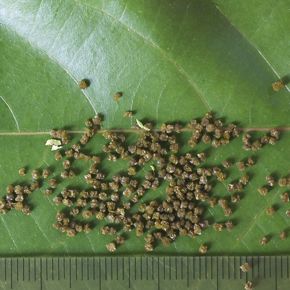

![7b. Atlas moth frass [wyc] - 2](https://besgroup.org/wp-content/uploads/7b.-Atlas-moth-frass-wyc-2.jpg)
![8. Atlas moth 13d-cat-moult [wyc] - 2](https://besgroup.org/wp-content/uploads/8.-Atlas-moth-13d-cat-moult-wyc-2.jpg)
![9. Atlas moth 58d-cat-last moult [wyc] - 06](https://besgroup.org/wp-content/uploads/9.-Atlas-moth-58d-cat-last-moult-wyc-06.jpg)
![10. Atlas moth 14d-cat [wyc] - 02](https://besgroup.org/wp-content/uploads/10.-Atlas-moth-14d-cat-wyc-02.jpg)
![11. Atlas moth 22d cat [wyc] - 5](https://besgroup.org/wp-content/uploads/11.-Atlas-moth-22d-cat-wyc-5.jpg)
![12. Atlas moth 30d-cat-ventral [wyc] - 1](https://besgroup.org/wp-content/uploads/12.-Atlas-moth-30d-cat-ventral-wyc-1.jpg)
![13. Atlas moth 34d cat-colour change [wyc] - 1](https://besgroup.org/wp-content/uploads/13.-Atlas-moth-34d-cat-colour-change-wyc-1.jpg)
![14. Atlas moth 49d-cat [wyc] - 03](https://besgroup.org/wp-content/uploads/14.-Atlas-moth-49d-cat-wyc-03.jpg)
![15a. 170512 voiding-pre pupal [wyc] a - 1](https://besgroup.org/wp-content/uploads/15a.-170512-voiding-pre-pupal-wyc-a-1.jpg)
![15b (16). Atlas moth cat-discharge-frass [wyc] - 1](https://besgroup.org/wp-content/uploads/15b-16.-Atlas-moth-cat-discharge-frass-wyc-1.jpg)


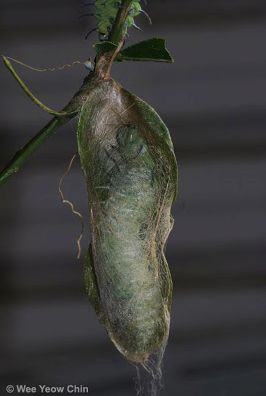


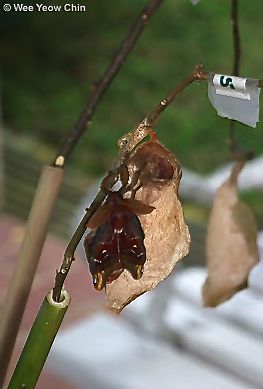
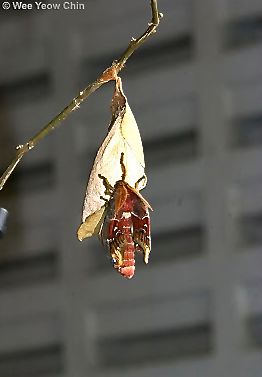
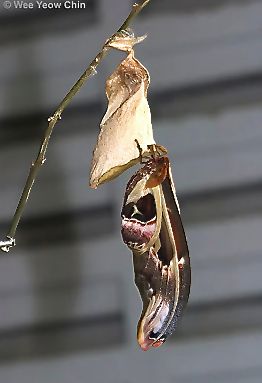








7 Responses
Good account with good pictures! Looking forward to part 3!
Thanks.
Wonderful job YC! Look forward to your raising more adult Atlas Moths and their re-introduction to many places from which they have been missing for years.
Thanks Chiu San but need a team of volunteers to do the job. But too many Atlas Moths can cause havoc to some of our wayside and park trees…